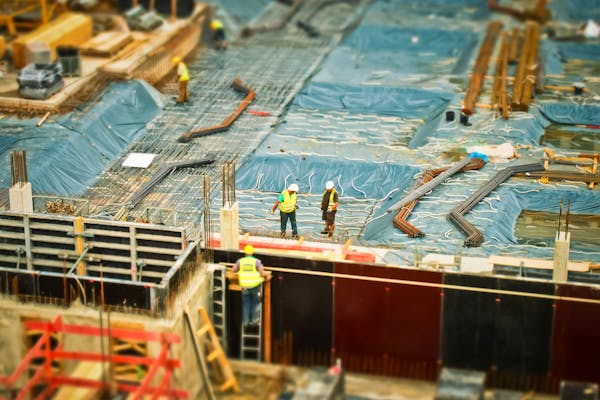In the realm of construction, innovation knows no bounds. From towering skyscrapers to intricate architectural marvels, the industry has always embraced technology to push the boundaries of what’s possible. Among the latest revolutions sweeping through construction sites worldwide is 3D printing. This transformative technology has redefined the very essence of construction, offering unparalleled efficiency, sustainability, and design flexibility. In this piece, we delve into the intricate layers of how 3D printing is reshaping the construction landscape, from concept to completion.

Breaking Ground: The Genesis of 3D Printing in Construction
The journey of 3D printing in construction begins with its inception, where it emerged as a groundbreaking solution to age-old challenges. Initially utilized for prototyping and smaller-scale projects, 3D printing gradually expanded its horizons to encompass larger structures, challenging the traditional norms of construction methodologies. The genesis of 3D printing in construction can be traced back to the early experiments conducted in the late 20th century, where researchers and engineers explored the feasibility of using additive manufacturing techniques for building applications. These initial forays laid the foundation for the development of more advanced 3D printing technologies tailored specifically for the construction industry.
Precision Engineering: Redefining Design Parameters
One of the most significant advantages of 3D printing lies in its precision engineering capabilities. By harnessing advanced CAD (Computer-Aided Design) software, architects can translate complex designs into tangible structures with utmost accuracy. This precision not only enhances structural integrity but also opens doors to unprecedented architectural creativity. Unlike traditional construction methods that rely on manual labor and craftsmanship, 3D printing allows for the seamless integration of intricate details and complex geometries, enabling architects to push the boundaries of design beyond what was previously imaginable. From organic shapes to parametric structures, 3D printing empowers architects to explore new frontiers of architectural expression, blurring the lines between art and engineering.

Sustainable Solutions: Embracing Eco-Friendly Practices
In an era dominated by sustainability concerns, 3D printing emerges as a beacon of eco-conscious construction. Unlike conventional methods that often generate significant waste, 3D printing minimizes material usage by only depositing what is necessary, thereby reducing environmental impact and promoting a greener future for construction. The sustainability benefits of 3D printing extend beyond material efficiency to include energy savings and reduced carbon emissions. By optimizing the printing process and utilizing recyclable materials, builders can minimize the ecological footprint of construction projects while still delivering high-quality, durable structures. Furthermore, 3D printing enables the use of sustainable materials such as recycled plastics and bio-based polymers, further enhancing its environmental credentials.
Material Innovation: Exploring New Frontiers
From sustainable bioplastics to advanced concrete formulations, researchers are constantly pushing the boundaries of material science to unlock new possibilities for 3D-printed structures that are not only durable but also aesthetically pleasing. The choice of materials plays a crucial role in determining the performance, appearance, and sustainability of 3D-printed structures. As such, researchers and manufacturers are investing heavily in developing novel materials specifically tailored for construction applications, where practical ideas such as professional structural steel detailing come into play. These materials exhibit properties such as high strength, durability, and fire resistance, making them suitable for a wide range of structural and architectural applications. Furthermore, advances in material science have led to the development of self-healing and self-cleaning materials, further enhancing the longevity and maintenance of 3D-printed structures.

Rapid Prototyping: Accelerating Project Timelines
Time is of the essence in construction, and 3D printing offers a remarkable solution to expedite project timelines. Through rapid prototyping, architects and developers can quickly iterate designs, identify potential flaws, and streamline the construction process, ultimately delivering projects in record time without compromising quality. Traditional construction methods often involve lengthy design iterations and costly revisions, leading to delays and budget overruns. However, with 3D printing, the iterative design process becomes significantly faster and more cost-effective. Architects can create multiple prototypes in a fraction of the time it would take using traditional methods, allowing for more efficient collaboration between designers, engineers, and clients.
Regulatory Challenges: Navigating the Legal Landscape
While the potential of 3D printing in construction is immense, it also poses certain regulatory challenges. From building codes to safety standards, navigating the legal landscape requires careful consideration to ensure compliance and mitigate risks. As 3D printing technologies continue to evolve and mature, policymakers and industry stakeholders must collaborate to establish clear guidelines and regulations that foster innovation while upholding safety and quality standards. Additionally, there is a need for greater transparency and accountability in the 3D printing process, particularly regarding material sourcing, quality control, and certification.
In conclusion, the advent of 3D printing marks a pivotal moment in the evolution of the construction industry. By merging cutting-edge technology with timeless craftsmanship, architects and builders are redefining what it means to construct the future. As 3D printing continues to mature and innovate, its impact on construction will reverberate for generations to come, shaping skylines and inspiring generations with structures that defy convention and ignite the imagination.

